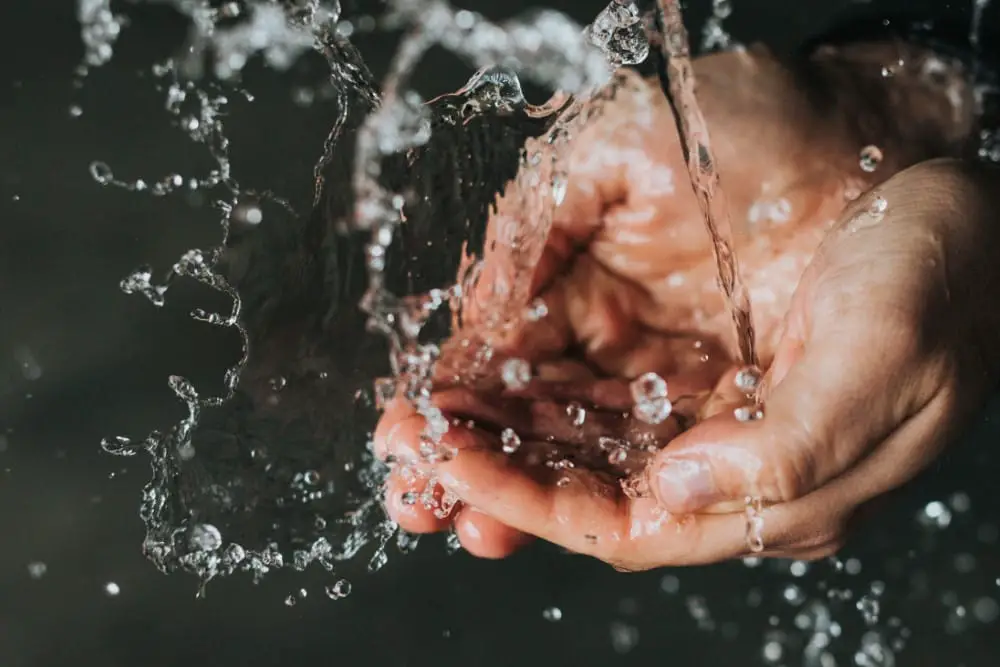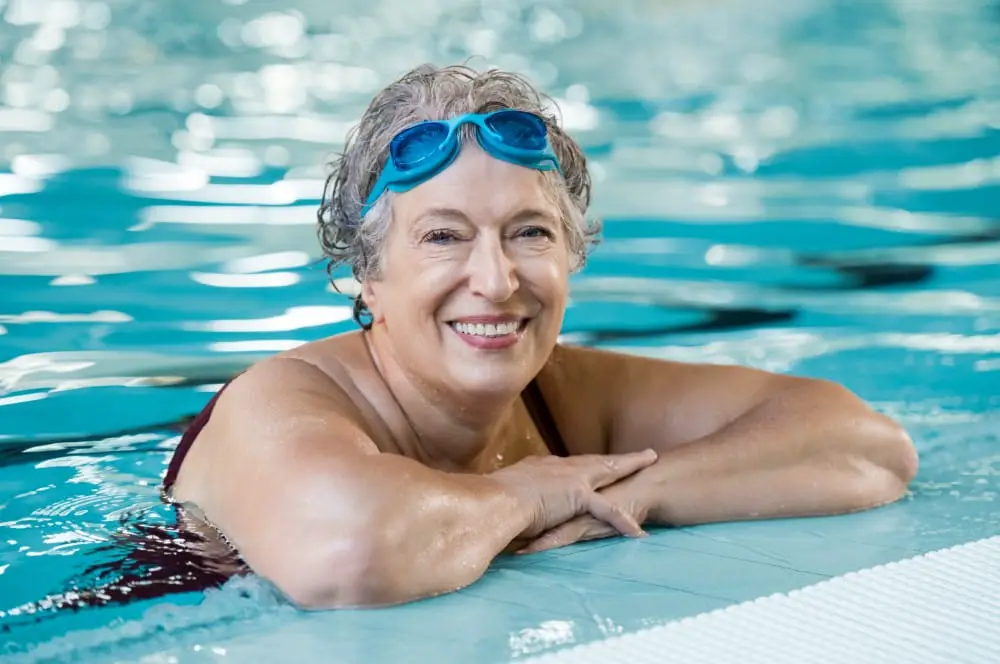
What are thermal waters and what are their characteristics?
The first thing to be clear about is that, as their name indicates, thermal waters emerge at least 5ºC hotter than potable waters that spring from the same ground.
They come from the subway layers that are at a higher temperature. In the process of evaporation and passing through different layers, they acquire minerals that give them important therapeutic qualities.
Depending on the minerals that become part of its composition, they receive a specific name and classification and, of course, become suitable for certain treatments, since, by acquiring minerals, they acquire different medical properties.
Why are there thermal waters and why do they have high temperatures?
You've probably wondered why hot springs have high temperatures. The answer is simple: because of their formation process.
It is through the earth's fault lines that the waters are introduced, provided mostly by rainwater or snow water.
On reaching a certain depth (and not being able to continue filtering as they encounter impermeable levels) they are heated by the high temperatures and return to the surface in the form of steam or hot water. Depending on the different depths to which the waters reach before resurfacing, the temperature at which they reach the surface will also be different.
Thus, thermal waters, as we will see below, are classified according to their temperatures: cold (less than 20ºC), hypothermal (20-35ºC), mesothermal (35-40ºC), hyperthermal (45-100ºC) and superthermal (100-150ºC).
If we look at their geological origin there are two main types of thermal waters. Firstly, we find magmatic ones, which are born from metallic or eruptive seams and have temperatures up to 50ºC. The other major type is telluric waters, which are more filtered and can appear anywhere.
Types of thermal water according to their temperature
If we classify thermal waters according to their emanation temperature, these can be of 5 types:
- Cold waters
Emerge from the ground at less than 20º C.
- Hypothermal waters
Emerge from the ground at between 20 and 35º C.
- Mesothermal waters
Emerge from the ground at between 35 and 45º C.
- Hyperhermal waters
Emerge from the earth at between 45 and 100º C.
- Superthermal waters
Emerge from the earth at between 100 and 150º C.
What are the benefits of thermal waters?
Although we have already seen that there are 5 types of thermal waters according to their temperature, we can divide them into two large sections: cold and hot.
Generally speaking, hot springs considered cold produce a stimulating effect. On the other hand, hot springs are vasodilators, thus improving circulation.
If we delve a little deeper, hot springs have other benefits, beyond those mentioned and the pleasant sensation when we immerse ourselves in them:
- They activate the defenses, by stimulating the neuroendocrine system
- They protect the joints
- They have anti-inflammatory and analgesic effect (reduce pain)
- They reduce the problems of osteoarthritis.
- They are also healing, since they stimulate the formation of blood vessels.

Are you looking for a spa to take care of your health?
Are you looking for a health spa?
HAVE A LOOK TO OUR WEB BROWSER TO FIND SPAs IN SPAIN!
Types of thermal water according to their chemical composition
If we classify the thermal waters according to what minerals they contain and these can be of different types:
- Chlorinated waters (with chloride and sodium, calcium and/or magnesium)
- Sulfate waters (predominantly sulfate anions)
- Sulfurized waters (with sulfide)
- Bicarbonated waters (with bicarbonate)
- Carbonated waters (high concentration of free carbon)
- Radioactive waters (containing radon gas)
- Oligometallic or weakly mineralized waters
What are the benefits of each of the thermal waters just mentioned? We explain it below so you can choose which one you feel like trying or suits you best. And remember that, when in doubt, it is best to consult with your doctor or the spa doctor.
Chlorinated waters (with sodium, calcium and/or magnesium)
Chlorinated thermal waters are rich in chloride (Cl-) and their mineralization must exceed one gram per liter. In addition to being rich in chloride, chlorinated hot springs can be rich in sodium, calcium and/or magnesium which can have an extra effect on the human body.
The chlorinated waters promote healing, while they are indicated to improve bone problems or respiratory and skin conditions.
In general, the SEHM (Spanish Society of Thermal Hydrology) recommends these waters in treatments of rheumatology, dermatology, ORL or otorhinolaryngology, but also in head and neck surgery, chronic respiratory conditions and in psychophysical states of exhaustion.
Balnearios de España website also recommends them in patients with traumatic surgical conditions, gynecological and neuralgia because of their "antiseptic, antiphlogistic and stimulating accession of external healing".

Sulfated waters
We call sulfated thermal waters those mineral-medicinal waters that contain sulfate, that is, salts of sulfuric acid (H2SO4). They must have a mineralization greater than one gram per liter.
The SEHM recognizes its usefulness both as a beverage and in balneotherapy. They are especially useful to expel bile stagnant in the gallbladder, to protect the liver (as hematoprotective) and to relieve constipation problems (as laxative), in digestive dyspepsia and biliary dyskinesias.
Apart from sulfate, sulfated waters may contain other chemical elements in a significant amount. Hence you often find in spas chlorinated sulfate waters (rich in chlorides), calcium sulfate waters (rich in calcium), magnesium sulfate waters (rich in magnesium), mixed sulfate waters (rich in bicarbonate, chlorides or both elements) and sodium sulfate waters (rich in sodium). They are usually characterized by their bitter taste and add extra effects to the action of simply sulfured water, helping to improve skin or digestive affections, among others.
Sulfurized waters
We call sulfur hot springs those waters that contain more than one milligram per liter of bivalent sulfur, a natural non-metal that is part of the periodic table and has a peculiar yellow color.
As the SEHM explains, sulfur waters can have organic matter in the form of algae (baregine) and/or bacteria (sulfobacteriaor sulfuraria) and can smell rotten (or if not rotten, then a bit regulero).
Despite their (relative) stink, sulfur hot springs "have a systematic oxidizing-reducing capacity" very powerful, so they can be very interesting to treat rheumatic, dermatological, ORL or chronic respiratory pains.
Bicarbonated waters
Biocarbonated thermal waters are those rich in bicarbonate or, what is the same, in acid salts of carbonic acid (H2CO3) in which the bicarbonate anion (HCO3-) predominates.
These waters are usually cold waters of low mineralization. Drinks "stimulate pancreatic enzyme secretion, increase the saponifying power of bile, alkalinize urine and skin pH" explains the SEHM.
Carbogenic waters
Carbonated thermal waters are those with a concentration of free carbon over 250 milligrams per liter of water.
According to the SEHM, if drunkcarbonated waters "are stimulants of gastric secretion and intestinal peristalsis".
If used in hydrotherapy "they produce arteriolar and cutaneous venous plexus vasodilation" which is why they are recommended for people suffering from obliterating arteriopathies or peripheral arterial disease that often cause intense pain in the calf muscles after a walk.
Radioactive waters
Do not panic, these radioactive waters have nothing to do with the use of nuclear power or nuclear power plants. We call radioactive thermal waters those that contain more than 67.3 becquerels or becquerels per liter of radon (Rn), a all-natural chemical element that belongs to the group of noble gases. In gas form, it is colorless, odorless and tasteless, and in small quantities it does not pose any health risk; on the contrary!
This is stated by the SEHM: "The doses of radioactivity applied in thermal cures" with radioactive waters "never pose a risk and have demonstrated benefits on the neurovegetative, endocrine and immune systems". That is why "this type of water is used in rheumatology, chronic respiratory conditions and certain psychiatric disorders such as anxiety, mood and sleep."
Want to sleep better? Maybe radioactive water is your solution. They are sedative and analgesic waters, as well as being indicated for respiratory and rheumatic problems.
Oligometallic or weakly mineralized waters
We call oligometric or weakly mineralized thermal waters those whose mineralization is between 50 and 500 milligrams per liter.
These types of mineral-medicinal waters are characterized by being very diuretic and drinks can cause a variation in the PH of the urine, as explained by the SEHM.
They are recommended for treating uric, oxalic and cystinic renal lithiasis. Hence, oligometric waters can relieve those patients suffering from kidney stones or bladder stones, nephritic colic, cystitis or hematuria.
Ferruginous waters
We call ferruginous thermal waters those mineral-medicinal waters with a content in bivalent iron of more than one milligram per liter. This concentration so important concentration of iron in the water is usually related to the existence of other trace elements in it. If consumed orally it provides iron to the human body.
Ferruginous water is also usually bicarbonated or sulfated.
Ferruginous water is a good ally to combat anemia, both in men and women, and all its symptoms (headaches, fatigue, somnolence,lack of concentration, lack of energy, cramps, hypotension, etc.). Choosing a spa with ferruginous thermal water is an ideal formula to relax, sleep better and raise iron reserves.
Peloids
In direct relation to the thermal waters, it is necessary to mention the peloids, since in their composition have a fundamental role the mineral-medicinal and thermal waters. They are the ones commonly known as mud or sludge, which are used in the treatments carried out in spas.
What elements or ingredients make up the peloids? Mainly, a natural solid product - mud from the bed of a stream, humus or similar - which is mixed with a mineral-medicinal water -especially chlorinated or sulfur waters-.
They have thermotherapy effects that join the therapeutic benefits of the thermal water that is part of its composition. They are most commonly used to treat chronic rheumatism, neuralgia or certain joint stiffness.
Minerals more present depending on the origin of the water
Returning to the geological classification of thermal waters, we can talk about the minerals that are most commonly present depending on whether the waters are magmatic or telluric:
- In the case of magmatic ones, the most common minerals are arsenic, boron, bromine, copper, phosphorus and nitrogen.
- In the case of telluric ones, bicarbonates, chlorides or lime salts, among others, are more common.
In addition to the minerals, in the process of filtration of the thermal waters they acquire negative ions beneficial to the body, especially for their relaxing properties. Although it may seem contradictory, of the two types of ions that exist - negative and positive - the negative ones are beneficial for the human being, while the positive ones are irritating.
What mineral concentration should the water have?
In addition to the above, it is important to note that, to classify a water in one category or another, this water must have a particular anion or cation that represents more than 20% of the overall mineralization of the water. That is, to be ferruginous, a water must have more than 20% bivalent iron (5% would not be enough).
Similarly, a thermal water can belong to several groups at the same time depending on its chemical composition, as well as having "trace elements responsible for other actions". This is why we can often find bicarbonated, carbonated and chlorinated waters, for example.
Note that thermal waters can be classified both by emanation temperature and chemical composition. Hence, it should not surprise you if a thermal center says that its waters are mesothermal and sulfurized, for example. It is something perfectly normal.

Are you looking for a health spa?
The Origin of hot springs and the scientific study of thermal waters
Already in ancient civilizations, thermal waters were used as therapeutic elements. In fact, there are findings on this subject dating back as far as 2,000 years B.C. We all know the Romans' fondness for hot springs!
If we move closer to the present, there is a key moment for the study of the benefits of thermal waters. It would be at the end of the 1980s when the benefits of thermal waters to promote good physical and mental health were recognized. It is then when the medical hydrology arises, accepted as complementary medicine by the World Health Organization and which continues to develop important studies related to thermal waters.
We can speak of three levels in which the thermal and mineral-medicinal waters are beneficial for the human being: biological, physical and chemical. In most of the cases, the action of the thermal waters is given in the three mentioned levels at the same time.
For example, among many other aspects, is the fact that the temperature of the thermal waters increases the body temperature. This destroys certain germs and toxins, while propitiating an increase in blood circulation and oxygenation.
When oxygenation increases, the metabolism is stimulated, specifically the secretions of the digestive tract and liver, helping to improve digestive processes.
In addition, in the process, the minerals present in the water can be absorbed by the skin.
Contraindications of thermal treatments
Thermal treatments are good for anyone, but in particular cases they may not be recommended. Thermal treatments "are contraindicated for people suffering from any contagious or infectious disease, malignant tumor processes, pulmonary tuberculosis, cardio-vascular insufficiencies, hepatic or renal, severe arterial hypertension, severe or important metabolic imbalances and those passing through the acute phase of any disease involving alteration of the general condition", according to the Asociación Nacional de Balnearios de España (ANBAL).
In general,the use of high temperature waters is discouraged in people with moderate to severe venous insufficiencies (including hemorrhoidal syndrome) and not only lower limb return insufficiencies; to certain symptomatic pictures of neurological diseases, such as multiple sclerosis orParkinson's disease, not so much because of the negative effect that the thermal cure may have on the evolution of the process, but because of the possibility of worsening the symptomatic complex (for example, tremor or difficulty in walking), he points out in negative aspects of the thermal cure the researcher Martín Megías, a member of the Department of Physical Medicine and Rehabilitation and Medical Hydrology of the Complutense University of Madrid and the Ministry of Health, Social Services and Equality.
The expert advises against bathing in mineral-medicinal waters rich in sodium for hypertensive patients and those with cardiovascular and renal complications; iron-rich to people with iron deposit diseases (such as hemosiderosis or hemochromatosis); and calcium-rich to those with lithiasic tendencies (calcium pyrophosphate stones). And, of course, to anyone who is allergic to any of the components or solutes contained in a given thermal water.
But do not panic. Thermal treatments are good (health, relaxation, beauty, we love them!), only in particular conditions may not be recommended. When in doubt, always consult your doctor or the spa in question.






